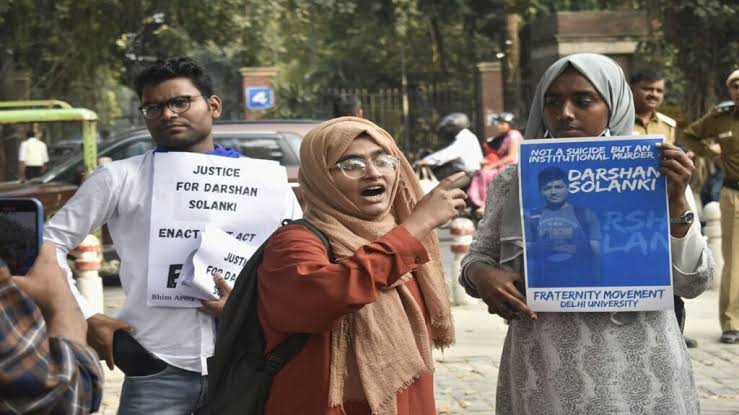
On September 10th, as the world observed World Suicide Prevention Day, the National Crime Records Bureau (NCRB) unveiled a concerning trend in India: over the past decade, student suicides have surged by a shocking 70 percent.
As per the NCRB, it was reported that in 2021, students comprised 8 percent of the total suicides in the country, accounting for 13,089 victims while in 2011, it was 5.7 percent. From 2011 onwards, there has been a consistent annual rise in the occurrence of student suicides in India.
Out of the 56,543 individuals who died by suicide in 2021 in the 18-30 age group, 714 cases were reportedly attributed to failure in examinations as a cause, the data showed. In the age group under 18, 864 students died by suicide due to exam failure during the same period, according to the data. This means that 94.32 percent of the individuals who cited exam failure as a reason for suicide were under the age of 30 and were students. The age group between 18 and 30 years was the most vulnerable, accounting for 34.5% of those who resorted to suicide.
In Kota, Rajasthan, a coaching hub where thousands of students enrol every year to prepare for competitive exams has reported the highest recorded instances of suicide since 2015. In the month of August this year, two medical aspirants died by suicide, both in their teens, taking this years’s student suicide count to 23 at the coaching hub. Among them, one was a 17-year-old aspirant, who jumped from the sixth floor of a coaching institute. Later that evening, an 18-year-old student from Bihar, who was also preparing for the medical entrance exam, was found hanging in his hostel room.
According to the Indian Express, the statistics for student suicides in Kota were as follows: 17 in 2015, 16 in 2016, seven in 2017, 20 in 2018, and eight in 2019. In 2020 and 2021, during the pandemic when many students left the city due to lockdowns, the numbers dropped to four and none, respectively. However, in 2022, there was an increase, with 15 reported cases, says the Kota police. The administration made it compulsory to install spring-loaded fans in hostels to prevent the students from ‘hanging themselves.”
Over the course of two months, two Dalit students at IIT Delhi died by suicide, shedding a distressing light on the pervasive issue of institutional discrimination experienced by students from marginalized communities within university campuses.
Ashish, a student at Jawaharlal Nehru University (JNU) who belongs to a marginalised community said to Maktoob that the universities lack a mechanism for proper caste sensitization and addressing caste- based issues, even after 7 years since Rohit Vemula’s institutional murder, the Rohit Act remains only on paper, with no political party taking it seriously.
“First, we need to understand how we represent caste in our society, whether as a source of pride or as a curse. Even within the upper-caste community, some individuals take pride in their caste identity and, unfortunately, use it to attack the rights of marginalised groups, especially the SC/ST communities. And when these individuals enter places like universities, they face caste-based atrocities. Universities lack a mechanism for proper caste sensitization and addressing caste-based issues. Neither the universities nor the government seem to recognize their responsibility in spreading awareness about such issues through effective programs,” says Ashish.
As per the National Crime Records Bureau’s (NCRB) report on “Accidental Deaths and Suicides in India 2021”, the highest number of suicides (not specifically among students) were reported in Maharashtra with 22,207 cases, followed by Tamil Nadu with 18,925, Madhya Pradesh with 14,965, West Bengal with 13,500, and Karnataka with 13,056. These figures make up 13.5%, 11.5%, 9.1%, 8.2%, and 8.0% of the total suicides nationwide, respectively. Together, these five states constituted 50.4% of all reported suicides in the country. The remaining 49.6% of suicides were distributed across the other 23 states and 8 union territories.
In the 2021 ADSI report by NCRB, family problems were identified as the major cause of suicide among individuals under 18 years old, accounting for 3,233 cases, which constituted 30% of the total within this age group. Subsequently, “love affairs” accounted for 1,495 cases (14% of the total), followed by illness at 1,408 cases (13% of the total), and “failure in examination” at 864 cases (8% of the total). The majority of cases categorised under illness, specifically 58%, were linked to mental health issues.



